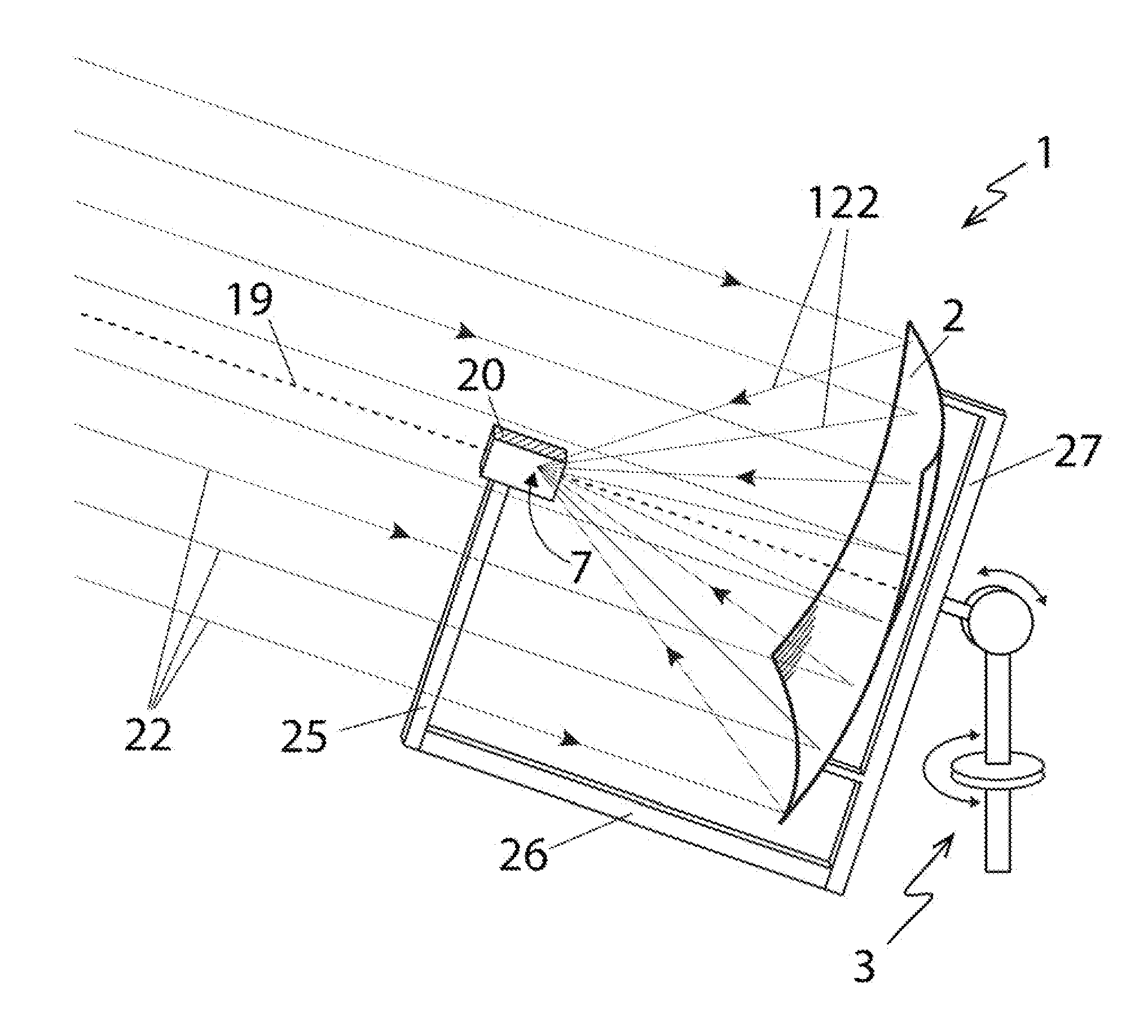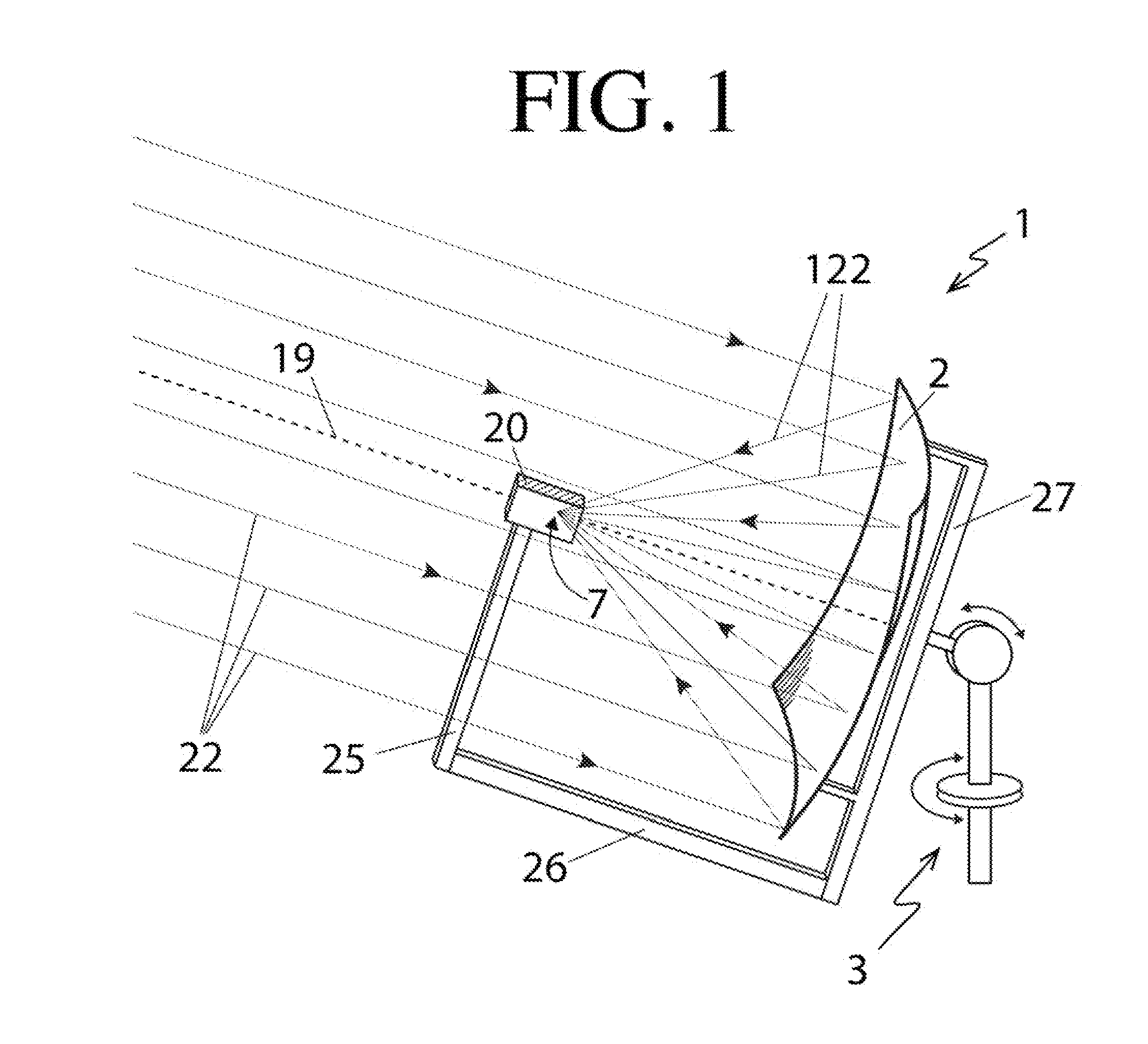Solar generator with large reflector dishes and concentrator photovoltaic cells in flat arrays
a technology of solar generators and concentrators, applied in photovoltaics, electrical equipment, semiconductor devices, etc., can solve the problems of inability to convert by a single high-efficiency multi-junction cell placed at the focus, and inability to achieve unevenness, so as to prevent contamination
- Summary
- Abstract
- Description
- Claims
- Application Information
AI Technical Summary
Benefits of technology
Problems solved by technology
Method used
Image
Examples
first embodiment
[0095]As shown in FIG. 1, solar rays 22 parallel to the axis 19 are reflected by the large reflector 2, and the reflected solar rays 122 converge upon the focus 7. Turning now to FIG. 2a, the reflected rays 122 pass through the focus 7 and impinge upon the lens 29. In accordance with a first embodiment of the present invention, the lens 29 shown in FIG. 2a is a telecentric lens 29.
[0096]FIG. 2a shows details of components comprising the PCU 20 according to a first embodiment of the present invention. In the illustrated example, a flat window 6 forms the entrance to the PCU 20. Within the PCU 20 and behind the window 6, is a two-element telecentric lens 29, a plurality of wedge reflectors 16, and a single planar array 18 of photovoltaic cells 30, which generate electricity. In this example, the telecentric lens 29 comprises a first piano-convex element 8, having a flat entrance surface 9 and a convex aspheric back surface 10. The telecentric lens 29 further comprises a second lens el...
second embodiment
[0127]A second embodiment of the present invention is described below which provides a different implementation of the power conversion unit or PCU 20 having a single lens element 70, and having photovoltaic cells 30 configured in four planar arrays 18.
[0128]Turning now to FIG. 17a, a second embodiment according to the present invention is shown comprising a PCU 20 having a single lens element 70. Solar rays 22 parallel to the axis 19, after reflection by the dish reflector 2, then converge as rays 122 in the PCU 20. The incoming light rays 122 converge to a focus 7. Additional converging rays 4 and 5 are shown which originate from opposite points on the edge of the sun's disc, and converge to the two corresponding focal points 701 and 702. The foci 7, 701 and 702 are formed within the single lens 70, which also forms the entrance window to the PCU 20 (as shown in FIG. 37).
[0129]The lens 70 shown in FIG. 17a comprises a single biconvex element with entrance surface 12 and exit surfa...
PUM
 Login to View More
Login to View More Abstract
Description
Claims
Application Information
 Login to View More
Login to View More - R&D
- Intellectual Property
- Life Sciences
- Materials
- Tech Scout
- Unparalleled Data Quality
- Higher Quality Content
- 60% Fewer Hallucinations
Browse by: Latest US Patents, China's latest patents, Technical Efficacy Thesaurus, Application Domain, Technology Topic, Popular Technical Reports.
© 2025 PatSnap. All rights reserved.Legal|Privacy policy|Modern Slavery Act Transparency Statement|Sitemap|About US| Contact US: help@patsnap.com



